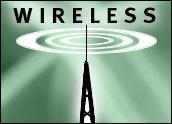
A simple AM radio can keep you abreast of events during a disaster. However, a smartphone is ideal for two-way communications, as well as for news and government messages via text message and social networks like Twitter.
I’ve been using a signal booster kit while backpacking around network-sparse, sunny Southern California. You could also hack together a kit to provide communications in the event of your local mast being out of service.
The kit includes backup battery, a cellular amplifier, and an extended antenna for bringing in distant signals.
Step 1: Gather the Parts
Find a suitable backpack to hold the kit. I’ve been using a simple daypack — the kind that children use for schoolbooks is fine for this purpose.
You’ll need a cellular amplifier. I’ve written about them before in “Pulling a Wireless Signal Out of Thin Air.” I use a Wilson Electronics 3-Watt car kit with antenna and cradle that operates at 800/1900MHz (US$159 at Amazon).
The cradle acts as interface between phone and amplifier. The frequency spread means that the kit works across almost all U.S. 3G networks. Amazon will sell you the one you need based on network.
Tip: The amplifier functions by boosting the wattage. Wattage is a measurement ofpower. Increasing the power in conjunction with a better antenna improves signal.
You’ll need a battery pack to run everything. I chose an 18,000-mAh, lightweight Lithium Polymer battery. I’ve written about these kinds of batteries before in “Juicing Up Your Gadget Battery Power.” I use the Energizer XP18000 ($148 at Amazon).
Tip: The amplifier requires 2 amps of electrical current, so a battery pack of this capacity will theoretically run the amplifier for nine hours before requiring a wall recharge. Periodic phone charging will lower this threshold.
You’ll need some bits and pieces, like connectors and an optional second antenna. I’ll go into this in later steps.
Step 2: Prepare the Antenna
Purchase a galvanized steel roof flashing shingle from a hardware store. Cost: a couple of dollars.
The stock antenna that ships with the Wilson 811214 kit uses a magnetic mount that’s designed to affix to a vehicle’s steel roof. The mounting method is part of the antenna design — the metal roof acts as a ground plane, and consequently the antenna won’t work without the metal.
Your, shiny new, highly portable roofing shingle acts like the car roof. Choose the larger 8-inch by 8-inch shingle size. You need a minimum of 7-inches by 7-inches for a quarter-wave ground plane at 800 Mhz. That ground plane dimension will cover all of the U.S. voice and 3G mobile frequencies, and also act as a good base to stop the antenna from blowing over.
Tip: Affix duct tape to protect your hands from the sharp edges.
Step 3: Add an Optional Higher-Power Antenna
Upgrade the antenna from the stock model if your budget allows. The stock omnidirectional model provides for an up to 6.12 dBi gain (Sprint), whereas Wilson’s more powerful Model 304411 directional antenna (about $50) provides for 10.6 dBi gain on Sprint.
Wilson kindly sent me the Model 304411 to try, and I saw noticeable signal improvements over the stock antenna. The 304411 is directional, and designed for pipe-mounting on buildings, so for our purposes, it must be mounted to a photographic tripod with included hardware.
Tip: The 304411 does not come with cables, so you will also need to order 10-feet of RG58 low loss cable with N male to FME female connectors. Cost: about $10.
Step 4: Position the Equipment
Place the stock magnetic-mount antenna on the roof flashing shingle, or point the optional directional antenna away from you and the equipment-containing backpack.
Tip: The antennas (stock and optional) are weather-proof. However, the rest of your kit isn’t, so keep dry. Do not operate in lightning storms.
Step 5: Make the Antenna Connections
Connect the antenna to the Wilson amplifier’s “Outside Antenna” port, and then connectthe cradle to the port labeled “Inside Antenna.”
Tip: If you are using the optional Model 304411 directional antenna, ensure it doesn’t point over the amplifier. The antenna needs to point away from the amplifier. If necessary, move the backpack.
Step 6: Make the Power Connection
Assemble the battery-to-amplifier connection. Energizer provides free connector tips that you can order on its website. The Energizer XP18000 battery pack-to-Wilson 811214 kit requires Tip NB13.
Tip: The antennas must be connected before powering the amplifier.
Tip: Keep the cradle and everything else at least three feet from the antenna. Don’t touch the antenna while connected to the amplifier.
Step 7: Try the Network
Rest the phone in the cradle. It will act as a low power repeater. Then try the call, text or data connection.
Download signal strength monitoring apps from smartphone app stores that will provide signal readings. Phones also have test modes that will display signal readings. Check your manufacturer’s website.
Tip: Improve stock antenna performance by raising the stock antenna, or going outside. Try open, raised spaces like park hilltops.
Improve the optional directional antenna performance by shunting it vertically in 10-degree increments until it has the most unobstructed line of sight to a functioning tower.
Locate the tower by experimenting. Move the antenna in increments until you find the sweet spot.





















































